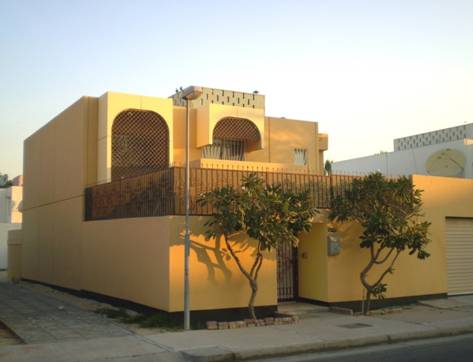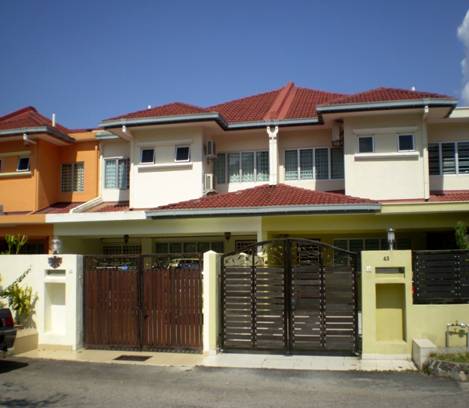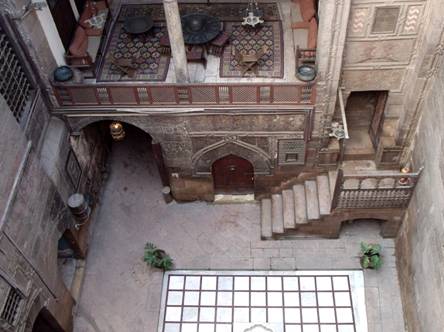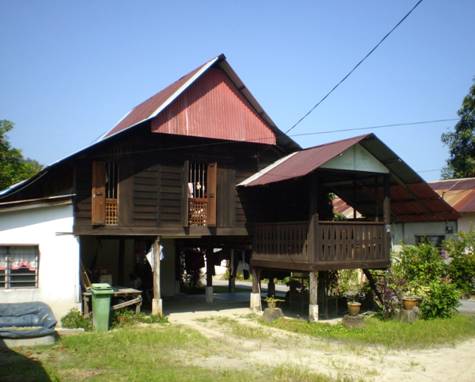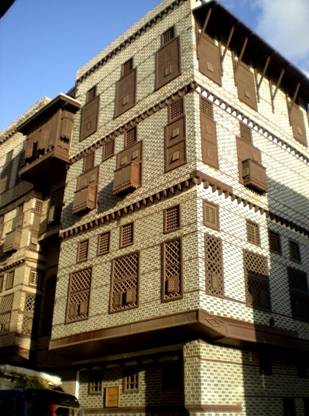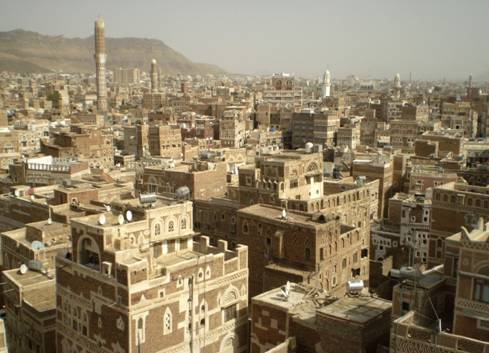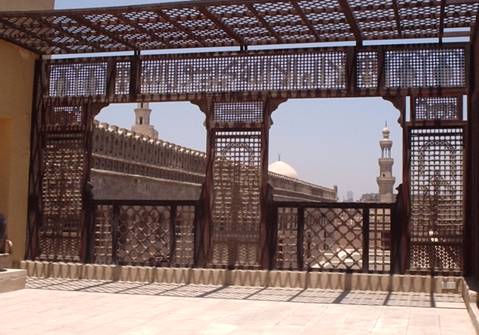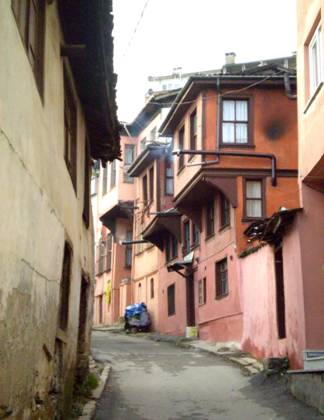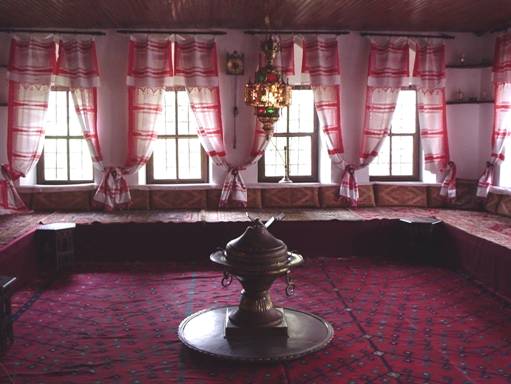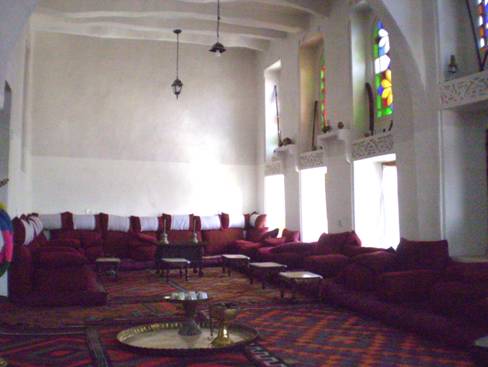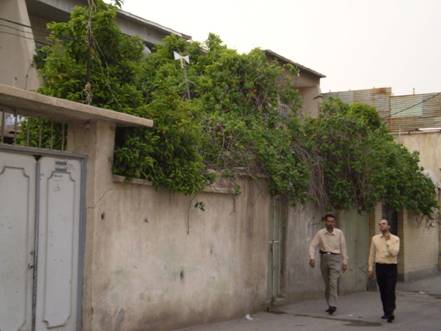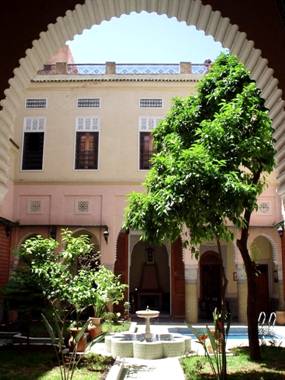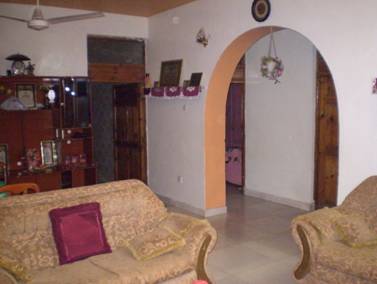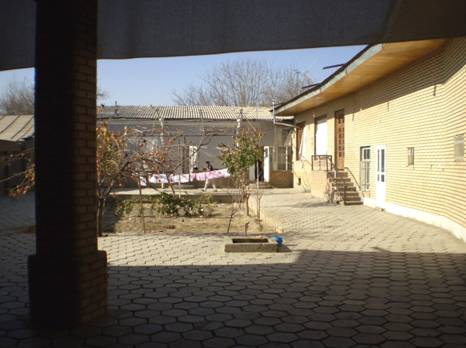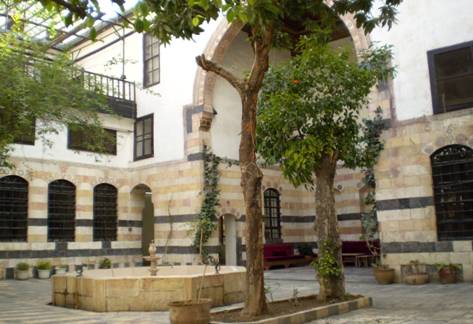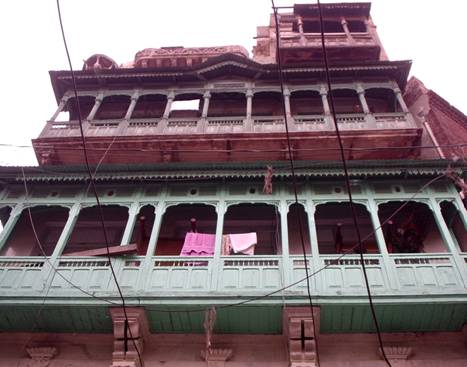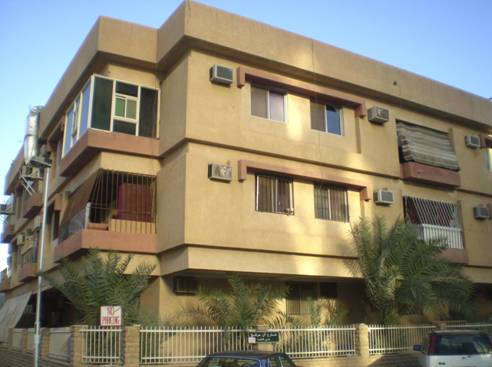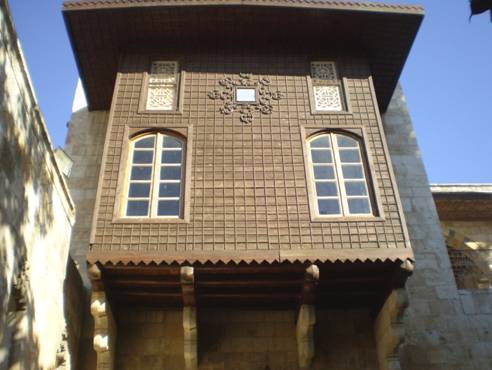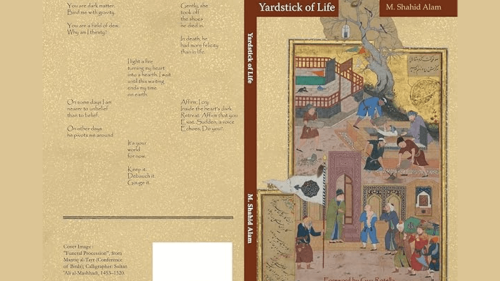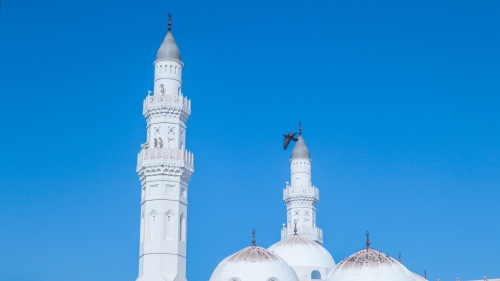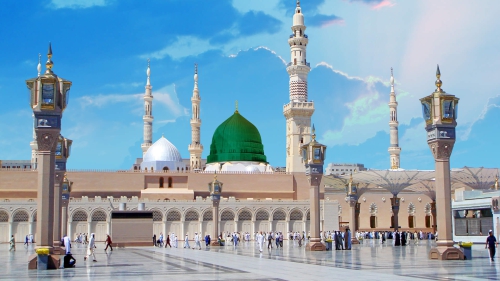Suggestions for Designing and Building Muslim Houses
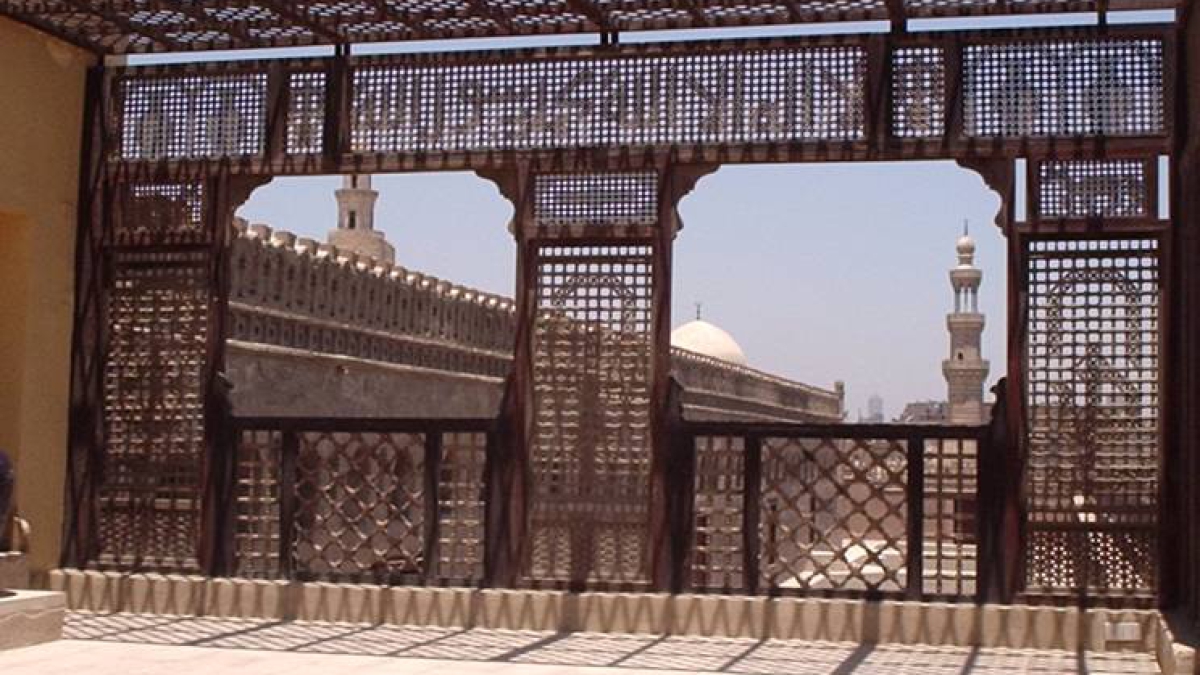
The following are some practical suggestions which should feature in nearly all Muslim houses. A number of the proposed Muslim housing features can be incorporated into Muslim houses and their renovations at little or minimal cost. Some features, indeed, cost nothing. They are about more effective and more creative use of features and spaces that may already exist and are common in most houses.
The proposed suggestions are as follows:
1. Muslim houses are to be as spacious as possible. There is nothing wrong in promoting spacious and comfortable houses for the sake of facilitating the attainment of some noble goals in them, while at the same time staying away from the influences of vice and sin. Admittedly, a big house can function better than a small one. The former's potential is a lot greater. The functions of a big house can easily be increased and diversified, something that is very difficult to achieve with a small house. It stands to reason that an excessive and unnecessary asceticism in housing, whereby the required performances of the house institution might be severely affected, is not recommended.
2. As a transitional point from the outside to the inside, and vice versa, a front door should be designed in such a way that it does not give immediate access to domestic quarters, but lead to a vestibule, or a lobby, instead. Facing and standing close to a front door, there could be a wall inside a house, as part of an inner space. The purpose of that wall will be to prevent the interior from being exposed to the outside world once a front door is opened. Whenever a front door is opened, the only thing one could see from outside will be that wall. In some places, however, for the similar purpose people like to place a small wall, or just a screen, outside and right in front of a doorway. In this case, a front door can hardly be seen from a road or a corridor outside a house, let alone what lies behind it. The front doors of neighbors should be set back from each other, especially when narrow corridors separate dwelling units like in compact neighborhoods and apartments. A front door should not be excessively huge. If it is huge, however, it can be double-leaf. A small door can also be pierced through a big panel that fills a doorway, or through one of the two big adjacent independent panels that hinge on each side of a doorway. Numerous variations on this basic design are possible. Doors with a few sections can then be operated as per needs. A front door should be decorated with certain calligraphic inscriptions. From the outside, a front door should feature the Islamic greeting, which is to be communicated upon entering, a simple but relevant supplication, or a verse, or verses, from the Qur'an, or an account from the Prophet (pbuh). From the inside, as a decorative element too, a front door should feature the supplication for leaving a house. These inscriptions will constantly remind the occupants of a house of the Islamic demeanor in relation to entering and leaving a house. At, or near, a front door there should be adequate means for seeking permission before entering.
3. Designing windows and other apertures should be in such a way that they duly comply with the requirements of privacy protection, though without compromising their intended functions. The more densely populated and busier a neighborhood, the more attention ought to be given to the matter. The following general suggestions could be considered: reducing the existence of the windows and apertures that face the outside world and trimming down their sizes, resourcefully and artistically screening windows, positioning windows and apertures strategically and above the eye-level, using opaque and semi-transparent glass, parapets, employing blocks and slabs used as both screening and decorative elements, etc.
4. Muslim houses must facilitate the privacy protection among the family members inside the house's realm. As a minimum requirement, every Muslim house should have a room for parents, another room for female children, and yet another room for male children. There also should be a common living room, a couple of toilets, a kitchen and a common store.
5. Muslim houses must facilitate the privacy protection between guests and visitors and the occupants of a house. Thus, there should be a space designated for guests and visitors in every house. This space should be positioned somewhere near a front door, away from a house's core, so that the normal domestic life is not seriously disrupted. There should be a toilet nearby. However, if some houses cannot afford a separate space for guests and visitors, any other space which is strategically located can serve the purpose. If there are no guests or visitors at home, the same space could be utilized for some other domestic purposes, subject to the needs and creativeness of a family. This is very important because this way the notion of entertaining guests and visitors, which Islam regards as very essential, will go down well with every family member. If, however, the presence of guests and visitors seriously disrupts the domestic life of people's houses, some of them, as a result, may develop a phobia about the whole matter. This, in turn, may lead to the gradual decline and eventual abandoning of the concept of Islamic hospitality, putting then some critical Islamic precepts and ideas, such as brotherhood, munificence, mutual love, care and respect, at stake.
6. Free intermingling between men and women among visitors, if they are from more than one family and are not closely related to each other, and between visitors and the family members of different genders, also if they are not closely related to each other, should be avoided, at most, and discouraged, at least. Organization of a house's inner spaces should promote and facilitate this segregation. Living rooms can be partitioned for the purpose. If a living room is not big enough to be partitioned, it can be used, for example, for men only, while another room, like a recreation, or a multipurpose, or a family room, can be used for women. If there is a space normally designated for visitors and guests, that space can be used for one group and a living room for the other group.
7. A living room should be planned near a front door. Because of its position, and because a room for visitors and guests is always located near it, which they also utilize, a living room is normally perceived as a semi-public space in a house. Thus, a clear demarcation line should be drawn between a living room and a house's most guarded sections, such as the kitchen and sleeping rooms.
8. Serious consideration should be given to the fact that many households in many Muslim countries have domestic maids or helpers, who are generally women and who stay in houses where they work. This means that a foreign person resides in a house. This entails many serious implications regarding the privacy of both a maid and the family members which must be addressed by Muslims. A staying place for a maid should be assigned near those spaces which are considered least sensitive for the privacy of both a maid and a household. The most ideal solution, perhaps, will be if a maid gets a room with her own bathroom at the rear of a house where a kitchen, a store and maybe a backyard are located. This room should function as somewhat semi-autonomous and semi-separated from the rest of a house's fabric and its vibrant life, thereby illustrating both the position and rights of a maid at home. The rule is that the more the room of a maid stays separated from the domestic life of a house, the better it is. Perhaps, in addition, there should be some precise provisions on this matter in the housing policies of those countries where employing domestic maids or helpers is a common practice.
9. Sleeping rooms should be planned and designed in such a way as to help the residents of a house to face the direction of the qiblah in Makkah when they sleep on their right side, as recommended by the Prophet (pbuh). One can also sleep with his head facing the qiblah and his feet facing the opposite direction. Though it is not a sin, but it is not recommended that one sleeps either on his left side or with his feet towards the qiblah. Moreover, a sleeping room should not have exceedingly sumptuous and cozy furnishings that can cause one to sleep excessively and even to become lazy. The state of sleeping rooms in Muslim houses and their furnishings should encourage and facilitate an Islamic tradition of going early to bed and waking up early refreshed and recharged for the Fajr (dawn) prayer, and even earlier for voluntary night prayers. Sleeping rooms should have neither those furnishing styles and accessories, nor entertainment elements, which could stand in the way of following the mentioned Islamic traditions. There should be least distractions. It was the practice of the Prophet (pbuh), as well the practice of the early and exemplary generations of Muslims, to have a light dinner, go to bed early and then to wake up before dawn for their prayers.
10. When planning and designing toilets, a Muslim architect should bear in mind that Muslims are advised not to face the qiblah direction, nor to turn their backs to it, whenever they defecate or urinate. They are to face any of the other sides, as counseled by the Prophet (pbuh). According to some scholars, so seriously does Islam view the issue of toilets and their directions that even if one has no choice but to use a toilet and in the process face or turn his back to the qiblah, one should try to deflect from an existing direction as much as possible. This was what the Muslims did after they had conquered Syria and found out that the toilets there were facing the qiblah. However, a majority of Muslim scholars are of the view that not facing the qiblah side, nor turning the back towards it, while answering the call of nature, is a preferable thing, not an obligation, and violating it incurs no sin. Many scholars assert, furthermore, that this particular injunction applies only to open areas where there are no walls or fixed partitions. But if there are walls, then there is neither prohibition nor detestation in facing the qiblah side, or turning the back towards it, while answering the call of nature. Besides, toilets are recommended to be spacious enough lest their users might have some contact unawares with impurity. Ample water -- preferably running water -- should always be available for cleaning the body and place. How important water in toilets is reveals a tradition according to which the Prophet (pbuh) once used a toilet. When he came out, he found that some water had been brought to him for ablution. On seeing it, he asked who had brought the water. When told that it was a companion 'Abdullah b. 'Abbas, the Prophet (pbuh) then supplicated for him: "O my Lord, enlighten him as to the matters pertaining to the religion!"
11. A kitchen is to be designed in a way that it reflects as much as possible the way Islam looks at our sustenance and how it should be handled and consumed. This is a very important point especially at the present when materialism and hedonism are many people's religious faith, and consumption, excess and gluttony their orthodoxy. The location and the dcor of a kitchen in a house should suggest that in Islam people eat to live, and not live to eat. Food consumption is a means, not an end. Overindulgence and wastefulness are severely censured by Islam. Food consumption, though a great blessing and gift from Allah, should be associated with good sense, self-control, accountability, compassion and sharing. Muslim kitchens should thus be characterized by moderation in all terms. They should function as fields where the mentioned glorious Islamic teachings and values are propagated and practiced. Since women spend much of their time in them, kitchens should be placed in the deepest and most secured from the public eye section of a house. Provision of windows and other openings in kitchens for the sake of ventilation and lighting, though necessary, must be handled very judiciously at all times, so that the dignity and moral shield of kitchens and what regularly transpires in them remain safeguarded. Links between kitchens and the rest of a house's most guarded core should be well executed and maintained, forming an axis at a safe distance from whatever could take place potentially involving outsiders, visitors or guests at a main entrance, or in a guest room, or in a living room. The existence of a buffer between the two sections, or privacy levels, in a house will ensure that regardless of what was happening and who was in a house, women will still face no problems to uninterrupted perform their domestic duties and to freely move around.
12. Muslim house designs should consider the qiblah direction. Every Muslim house is a place of worship, i.e., a "mosque". People not only pray therein, but also carry out the rest of their activities for the sake of pleasing Allah. In the heart of every Muslim resides the Ka'bah in Makkah in which direction they pray five times a day. Hence, in every Muslim house, and inside each and every major inner space, there should be a clear physical indication of the Qiblah direction, on the ceiling or on the relevant walls, simple or elaborate. This can be part of a decorative strategy in a house.
13. In every Muslim house, a space should be designated for a musalla (a place for praying or worship) -- no matter where and how big or small -- where the five daily prayers, tadarus al-Qur'an (collective study of the Qur'an), tadhkirah (religious reminders and motivational conversations), meditation, discussions, dhikr (remembering Allah), etc., could be conducted. Some of these activities will be conducted individually and some collectively among family members. Relatives and neighbors can be occasionally invited for the purpose. To have a musalla in one's house, one does not need a special room. A designated corner, or just any space, in a house can do the job. The designated place should permanently have some articles like a praying mat, religious posters, and a shelve with a few copies of the Qur'an and the copies of other religious texts. The place can be distinctively marked and even decorated. Since the five daily prayers will be the most common activity at the allocated place, a makeshift niche (mihrab), or just an ornamental carving on a wall pointing to the direction of the qiblah, will be desirable. The existence of a musalla and all the things that go with it at home will help people, especially children, to grow up and live on completely comfortable and friendly terms with Islamic spirituality, making it their permanent and best life companion.
14. In a Muslim house, a studying room, or an area, or just a corner, should be earmarked with sufficient facilities in it. If possible, a small library can be attached to it. A studying area can be placed next to a musalla, due to the similarities of the purposes and roles of the two. The two can even be integrated into one single space. The place is to be frequently used by every family member, and now and then by relatives and neighbors. The presence of a studying area in a Muslim house, inspired by how serious Islam about knowledge is, will go a long way in inculcating into the minds and hearts of Muslims, especially children, a culture of earnestly acting upon and appreciating learning. Likewise, it will help to curb through the means of knowledge and appropriate, creative and critical attitudes and thinking a growing menace posed by some materialistic and hedonistic tendencies whereby the house is seen as no more than a place to eat, sleep and take excessive pleasure in other worldly delights.
15. A Muslim house is expected to take into account the climate, topography, wind direction and the movement of the sun, so that it is turned as much as possible into an effective self heating, cooling, ventilation and illuminating mechanism. A Muslim house will get the most out of the sources of natural energy that surround and impact upon it. It will resist the harmful influences of its neighboring environmental factors and elements. It will be self protected and well insulated. Generally, a Muslim house will be favorably responsive to its ecosystem, irrespective of whether it exists in warm or cold climates, in dry or rainy conditions. It will be an "ally", not an "adversary", to its surroundings. It will not depend solely on artificial sources and means for energy. However, due to vast differences in climates, topographies and environments from one place to the other, this matter will be best dealt with on a case by case basis. Good, extensive and creative field research will be vital. What will be affected most in all cases, though, are the house envelope, choice of building materials, the orientation and depth of houses, the layout of inner spaces, the thickness and color of walls, the type, form, contour and color of roofs, as well as the positioning, style and size of entrances, windows and other openings. This consideration will help a house to be energy efficient, nature friendly and sustainable. It will help a house to stave off wastefulness. It goes without saying that Muslim housing and the contemporary notion of passive design are fairly compatible as both of them call for manipulating and controlling daylight, air quality, temperature, humidity, noise levels and insulation for the sake of people's comfort and health.
16. A Muslim house will incorporate into its fold as much nature as possible. This consideration will also help a house to be energy efficient, sustainable and its natural surroundings friendly. Due to vast differences in weather and natural conditions from one place to the other, this matter too will be best dealt with on a case by case basis. Good, extensive and creative field research will be vital. To have various elements from nature in a Muslim house is highly desired because such leads people to benefit from the spiritual dimensions entailed in the natural environment right at their doorsteps, because of the recreational potentials that the natural environment innately has, and finally because of the psychological and emotional healing power that nature generally possesses. Indeed, benefiting from the world of nature is effortless. Just observing flowers, a tree, or green grass, or allowing to be coddled by a breeze or the rays of sunlight, or watching the day turn into night, and night into the day, can present a person with tremendous spiritual, recreational and remedial advantages. It has been proven over and over again that the weather, nature and temperature clearly influence human behavior. So do crowding and lack of comfort at home, to the extent that "prolonged high indoor density often impairs mental and physical health, task performance, child development and social interaction." "Increasingly there is evidence for a fairly direct effect of certain forms of nature on our psychological function." It is believed that viewing and being in nature improves our health, both mentally and physically. "The evidence is clear that nature usually helps people recover from stress associated with modern industrial life." This consideration further means that no harm will a Muslim house cause to its natural surroundings.
17. A Muslim house will not generate any harm to its neighbors and their houses. It will not indiscriminately block the sun, wind, and views to them. It will not upset them with its noise, unpleasant smells, waste, sewage and other forms of pollution. A Muslim house will guard its privacy. At the same time, it will not violate its neighbors' right for privacy either. It will not "show off", nor will it epitomize pride, prejudice, discrimination and haughtiness. It will integrate itself well and peacefully into its existing physical and social contexts. It will project itself as highly compatible with them, yet as their integral part. A Muslim house can not turn itself into the bane of someone's life.
18. Balconies, porches, terraces, open roofs, courtyards and backyards in houses should be tactically designed and located, and should be properly screened and guarded, so that the 'awrah and privacy of the family members, when they use them, are not infringed upon. Unfortunately, these are some of the housing components where the issues of the 'awrah and privacy are perhaps most frequently and most severely violated today, as people regularly use them for recreation, interaction, socialization, natural ventilation and lighting purposes. It is true that all of balconies, porches, terraces, open roofs, courtyards and backyards can create favorable microclimates and comfortable ambiances for their users, but the matter is two-edged and can become very sensitive, so it needs be carefully and responsibly attended to.
19. A Muslim house should be decorated with various Islamic themes employing various styles and methods. Here too moderation and clear purpose and goals will be the key. Calligraphy, abstract geometry and floral patterns, backed by a rich and ingenious use of light and colors, should dominate. Calligraphic inscriptions will be from the contents of the Holy Qur'an, the sunnah of the Prophet (pbuh), the sayings of famous Muslim sages, and from the contents of Islamic spiritual poetry, old and new. Calligraphic inscriptions will not be selected randomly. Rather, they will be selected in such a manner that the contents and spirit of their messages agree with the characters and functions of the spaces inside a house. They should be understandable to the users of a house. This way, decoration will be more meaningful and functional, and will thus have more effects on users. The objectives of decoration in Muslim houses, by and large, will be: to enhance the overall serviceability of houses; to promote the glorification of Allah and the humbling of man; to enhance the aesthetic appeal of houses; to incite contemplation, positive thinking and self-assessment inside houses; to both sooth and excite; to help the form of houses to become subservient to their function; and to help houses to function as both a means of and an avenue for the propagation of Islam (da'wah Islamiyyah). Decoration in Muslim houses must not feature statues and representations of humans.
20. A Muslim house should promote legitimate recreation. There should be enough facilities, means and spaces inside a house that can cater to this exigency of life which Islam perceives as natural and extremely important for people's physical, mental and spiritual wellbeing. Living rooms, courtyards, backyards, porches, terraces and balconies are the spaces that can be utilized most for the sake of recreation. However, people should always be creative enough both for inventing their legitimate types of house recreation and for finding ways and means as to how to ensure that the form and function of their houses satisfy their recreational needs. Quite often, though, for one to entertain and regenerate himself, one needs very little and very simple means. He perhaps needs just a chat with his loved ones. He perhaps needs just to give or receive attention from them. Many people like to complicate things and project attaining a genuine mode of recreation and its splendid goals beyond the rich of typical housing conditions. Quite often, furthermore, just having a collective family meal, while sharing a light conversation with a few jokes in the process, could do wonders. Pursuing a good and ingenious recreation at home is indispensable for maintaining one's emotional, psychological and spiritual wellbeing, as well as for enhancing the relationships between the family members based on understanding, forbearance, mutual love and care. Many social illnesses can be warded off in the process. Home recreation should not depend entirely on those artificial means, gadgets and devices, such as television, radio, video, computer, etc., which can easily be overused, and even abused, in which case their disadvantages become more plentiful than their advantages.
21. A Muslim house should possess the highest safety and security standards. The absolute wellbeing of people is the objective of Islam. It follows that the same must be the objective of whatever man, Allah's vicegerent on earth, does.
22. A Muslim house should give some consideration to the needs of the disabled and elderly people. Among these two categories of people might be a person's parents, visitors, guests, etc. Their rights must be respected too.
23. A Muslim house should have, if possible, more than a single circulation system. This is to facilitate the needed and unobstructed movement of people inside a house, and from inside a house to its outside and vice versa, without putting the 'awrah, privacy and peace of any user of a house at stake.
This article is an excerpt from the author's book "Islam and Housing":
*****
Dr. Spahic Omer, a Bosnian currently residing in Malaysia, is an Associate Professor at the Kulliyyah of Architecture and Environmental Design, International Islamic University Malaysia. He studied in Bosnia, Egypt and Malaysia. His research interests cover Islamic history, culture and civilization, as well as the history and philosophy of Islamic built environment. He can be reached at spahicoyahoo.com; his blog is at www.medinanet.org
Topics: Islamic Art And Architecture, Islamic Culture And Civilization
Views: 113639
Related Suggestions






